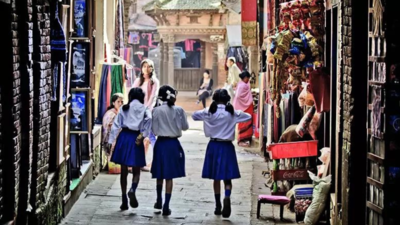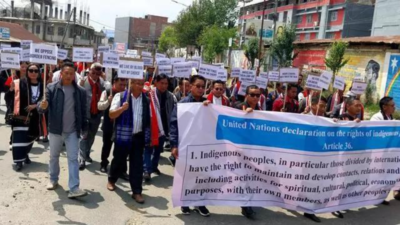How World Leaders Reacted To Trump’s Reciprocal Tariffs

New Delhi:
Escalating a global trade war, US President Donald Trump unleashed a barrage of reciprocal tariffs to match duties put on US goods by other countries. The American commander-in-chief said he would impose a 10 per cent baseline tariff on all imports to the United States and higher duties on some of the country’s biggest trading partners.
“It’s our declaration of independence,” Trump said at an event in the White House Rose Garden. “We will establish a minimum baseline tariff of 10 per cent.”
China’s rates would be set at 34 per cent, while the European Union and Japan would face 20 per cent and 24 per cent, respectively. India would be charged an import duty of 26 per cent.
US trading partners reacted to the development and vowed swift retribution, while also trying to persuade Trump to reach deals to avoid tariffs in the first place.
Also Read: Donald Trump Announces 26% “Discounted Reciprocal Tariff” On India
Reacting to Trump’s announcement of tougher barriers for Aussie beef, Australian Prime Minister Anthony Albanese said the American people will pay the bigger price for the unjustified move.
“It is the American people who will pay the biggest price for these unjustified tariffs. This is why our government will not be seeking to impose reciprocal tariffs. We will not join a race to the bottom that leads to higher prices and slower growth,” he said.
Canadian Prime Minister Mark Carney vowed to “fight” against Trump’s sweeping tariffs, which he said will “fundamentally change the global trading system.”
The impact of Trump’s latest tariff announcement for Canada was limited compared to other major US trading partners, but Carney said American levies on steel, aluminum and automobiles will “directly affect millions of Canadians.”
“We are going to fight these tariffs with counter measures,” Carney said in Ottawa.
British Prime Minister Keir Starmer, who made intense comments, said a “trade war is in nobody’s interests.”
“We have prepared for all eventualities — and we will rule nothing out,” he told parliament.
Germany warned that trade wars hurt “both sides.”
Also Read: Trump Unveils Reciprocal Tariffs On Countries. See Full List
Spanish Prime Minister Pedro Sanchez said his country would “protect its companies and workers and will continue to be committed to an open world.”
Sweden Prime Minister Ulf Kristersson noted that his nation doesn’t want growing trade barriers. “We don’t want a trade war … We want to find our way back to a path of trade and cooperation together with the US, so that people in our countries can enjoy a better life,” he said.
Irish Trade Minister Simon Harris said Ireland and the European Union (EU) were ready to find a negotiated solution with the US. “Negotiation and dialogue are always the best way forward,” said Harris.
Italian Prime Minister Giorgia Meloni, a Trump ally, also vowed to work with President Trump to find an agreement to avoid the “trade war that would inevitably weaken the West”
“We will do everything we can to work towards an agreement with the United States, with the goal of avoiding a trade war that would inevitably weaken the West in favor of other global players,” she said.
The European Union will react to new Trump tariffs “before the end of April,” said a French government spokeswoman.
The 27-nation bloc’s initial salvo would counter US actions on steel and aluminum, followed by sector-by-sector measures.
Meanwhile, Latin America’s biggest economy, Brazil, approved a law on Wednesday to counter the 10 per cent tariff imposed by Trump. There was no immediate reaction from the president, but last week, Luiz Inacio Lula da Silva said his country “cannot stand still” in the face of the tariffs.








